Two contrasting courses
Two contrasting courses

The Cheshire course and the Nicklaus course, here at Carden Park, are two very different courses. It's great for the golfers that come here to have the opportunity in the morning to play either a typical American semi-target form of golf, or a traditional inland links type of game. We're lucky to be able to maintain and provide two contrasting courses at one venue.
This year's summer has been very good for the Club, but it has put a slight strain on the staff, having to keep up with the general watering. The Cheshire course doesn't look aesthetically pleasing at the moment as the fairways look dry and brown; there are few corporate players that will accept a course that isn't green these days. 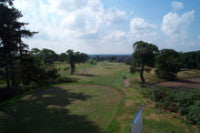
However our non-corporate members love the course, as it resembles a very traditional inland links course. Even so, we have had to carry out regular syringing during the day to keep the surfaces cool, and in all fairness we just don't have the complement of staff to water tees, greens and fairways everyday.
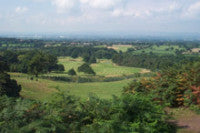
In a hot summer, like this one there wouldn't be enough water in the area to keep the Cheshire course from burning up on the fairways.
We are fortunate that we are now in our final year of completing the automatic irrigation on this course, which up until now has only had hand-watering facilities on the tees and greens. This course is mains fed and we have just one 20,000-gallon tank to feed from. We would like to build a new reservoir off-site that can be linked to the existing lakes and therefore the irrigation system but that plan is still some way off at the moment.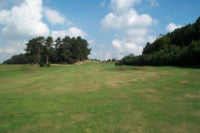
Even so the Cheshire course is open to members all year round, it never suffers from the wet, and the only time the course closes is when we have heavy frost conditions and/or snow.
The bottom line is that I can cope with a long hot summer, what I can't abide are long wet winters. The Nicklaus course being clay based turns the other way as we move into the wetter seasons. We have an on-going remedial plan of drainage and sand dressing, to address the soil structure, and there are a few thousand tonnes of specified drainage sand added to the fairways every year.

We're starting to look at our treated sewage water situation, and we've just purchased a Sweetwater system. This is to help acidify the water in the lake; simply it's a sulphur burner that reduces the level of bi-carbonates and nitrates in the water. All the Industry facts about it show it produces better quality water that helps the plant uptake nutrients more efficiently with less watering required. I have spoken to other Greenkeepers who have the system installed already and they have been impressed with its performance, so we're giving it a go.
The biggest problem with the Jack Nicklaus course is that it's closed for four to five months of the year. When it re-opens there seems to be a resistance from the customers (not the management) to see too much aeration or other disruptive work carried out on the course.
At this time of year we've just had the Seniors Tournament so there was no surface disturbance in the build up to that, and then the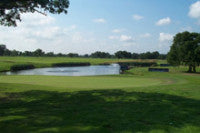
The Nicklaus course in contrast has pop-up irrigation on the tees, greens, fairways and aprons and is fed from the lakes. The greens were constructed eleven years ago and are made up of fescue/bent mix. They are still very clean, as there is very little Poa in the sward. It would be nice to remove the existing Poa by hand weeding, but we run the department on tight financial guidelines and the resources aren't there to commit staff to such endeavours.
In terms of water we will give the fairways about 15 minutes of water per head twice a week, as long as the grass is healthy it doesn't have to look greener than green. For an event, we may put our best frocks on and spend extra time watering, but it's not something that is sustainable past the event, particularly in these dry, hot conditions.
We had a late finish on the Nicklaus course last year, with golf being played up until the beginning of November, this year the mild spring allowed us an early start, with play resuming in March.

Both course have suffered terribly from dry patch this season and to counteract this we have been spot treating areas by hand forking, syringing and dressing with a mix of seaweed, calcide clay and wetting agents. The biggest challenge for me this year has been to introduce some new grasses to the greens of the Nicklaus course. They have a lot of Providence in them, but it is a finicky grass and requires more time to look after than we have available to us.
Three times so far this year, we have lightly scarified with a Sisis 600 rotorake and then undertaken over-seeding operations, adding Penn A4 and G6. The results look promising now that we're giving the new grasses a chance to establish.
We dress the greens with no more than 250kg's of medium sand every seven to ten days. The dressings are then worked evenly into the surface. We were finding that the grass was becoming stressed if the brushing was too aggressive, so for all the modern equipment available to us, I now get two of the lads simply using three foot wide soft brooms to brush in the dressings. We take a bit more care and time over this operation and it has helped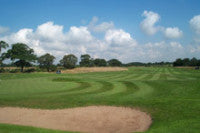
We've hollow tined three times this year and solid tined twice. Through last winter we slit tined both the courses on a weekly basis to great effect, certainly the Nicklaus course benefited from the extra aeration. For a corporate course this is a lot of aeration, and it helps us that its out of play during the winter. We don't get any real chance to do this work during the playing season, so I prey that we have a good October, so the lads can get on and play catch up with the aerating.
We have finished with our use of granular fertilisers from the end of last May, choosing instead to apply feed in liquid form. This way we are able to mix our own fertilisers, adding extra nutrients and molasses and then put down precisely what we want and the plant requires.
We have purchased a new Toro spraying unit, and we regularly trickle feed, which means that the course keeps more of a uniform colour and we don't get the flushes of both colour and growth. This method keeps us more in control. Obviously the regular trickle feeding also maintains a healthier plant, less susceptible to disease.
It's is possibly to early to say whether there has been major improvements of the greens because of it, but there is definitely more consistent root growth because of the change to liquids. The feeds are administered every ten to fourteen days, incorporating maybe 5kg's of molasses per hectare, 25kg's sulphate of ammonia, mixed perhaps with either sulphate of iron, chelated iron or seaweed depending on what I feel is required at the time. We do regular soil analysis, and there is nothing untoward on either course, so it's a question of keeping nutrient levels topped up subject to how the grasses visually look and the incoming weather.
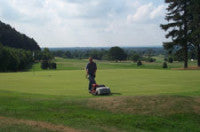
I don't give my staff a hard time either, we have very good staff here, some of whom have been here for as long as me. Our turnover is minimal, and the people that we do lose, generally aren't going to make it in the Industry.
The Nicklaus course is very generous in terms of its layout, it has wide fairways, but the bunker placement is very strategic, and they don't show themselves easily. The whole course is all suggestion and shadow. To be fair Jack Nicklaus designs a course that allows all levels of golf to be played. 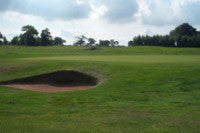
The course is starting to mature, and we have planted in excess of 80,000 trees on this course alone. If we didn't cut the Nicklaus course for five or six weeks and took all the furniture in, I don't think you'd know there had ever been a golf course here-I think that's a tribute to his design.
There is a lot of wild flora and fauna, and the rough has many native grass species that we allow to grow naturally. The weeds in the rough are controlled with knapsack spot treating.
The trees and surrounds continue to mature and in another five years time we'll see a big difference. We have achieved pretty much everything so far that we set out to do and it's pleasing to see the return of birds such as Barn Owls, Buzzards and Kites nesting here again.
